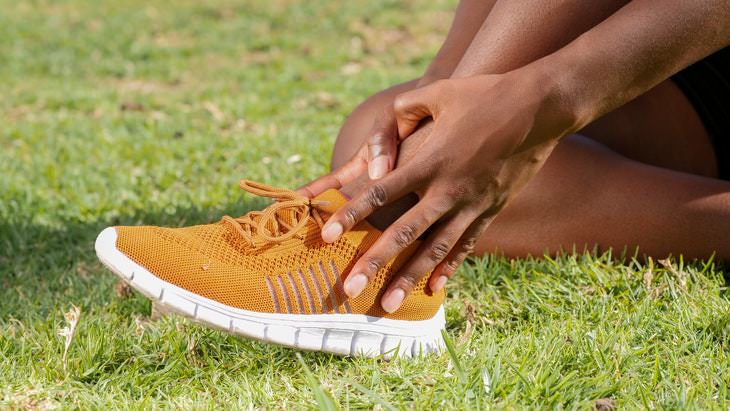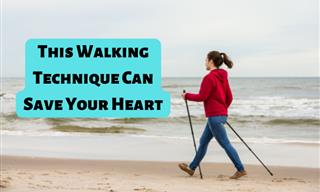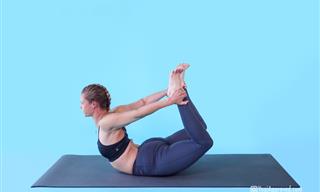The Health Benefits of Walking For Seniors

Walking is s surprisingly effective but often overlooked form of exercise. People of all ages can benefit from walking, as it trains the cardiovascular system, increases one’s endurance, helps strengthen the muscles, stabilizes the joints, and keeps the bones strong. The CDC suggests that just 25 minutes of walking daily can help you stay healthy and prevent disease.
We also shouldn’t forget that walking is the most accessible type of exercise because it doesn’t require any expensive equipment. As long as you can put one foot in front of the other and have a comfortable pair of shoes, you can do it.
What makes walking a perfect exercise for seniors? First and foremost, walking is a low-impact exercise, which basically means that it will not wear down your joints. But there are numerous other benefits of walking for older adults too, namely:
- Lowers risk of heart disease - daily walking cuts the risk of heart disease by 30-50%.
- Reduces blood sugar - a short walk after a meal improves blood sugar control and naturally reduces blood sugar levels.
- Preserves cognition and prevents memory loss - after a year of brisk walking 5 times a week, seniors with mild cognitive impairment were reported to have better brain blood flow, cognition, and memory.
- Improves balance and coordination, which is important for preventing falls.

- Reduces joint pain - low-impact exercises help lubricate the joints and reduce pain caused by arthritis and other chronic issues.
- Mental health benefits - walking for just 12 minutes can improve your mood.
- Better immune health - people who take regular walks don’t get sick as often as those who stay at home.
Related Article: How to Lose Weight with Walking
All of these benefits allow seniors to live longer and stay independent. Walking can help seniors feel more capable, confident, and safe in their daily lives. So adding a few more steps to your life is always a great idea.
How to Prepare to Start Walking
Any new exercise routine will challenge your physical and mental limits. If you’re a senior who is set to start a walking regimen and you have any underlying health issues, make sure to consult your physician. Any fitness routine should meet your specific needs and enhance your well-being, and even a low-impact exercise like walking isn’t suitable for everyone.

Before you begin walking, read these tips to get the most out of walking:
1. Wear breathable clothing and comfortable walking shoes with arch support and shock absorption.
2. Don’t skip warm-up and cool-down. Start your walk slowly in the first 10 minutes and then pick up the speed. After the walk, do some simple stretches or relax and let your heart rate bounce back to normal.
3. If you use a cane or walker, bring them to add extra support for your joints and improve your balance.
4. Walk with a friend. It’s the perfect chance to catch up and just have a pleasant conversation. And the social extra social interaction will also improve your wellbeing. Harvard Health Publishing states an active social life is linked with health benefits like a lowered risk of depression and longer life. Plus, it’s just safer too!
5. Have a fully charged cell phone on standby. It doesn’t matter if you walk alone or with someone, it’s crucial to have a charged phone on you in case someone needs assistance.
6. Start on a dirt road. A dirt path is the mildest for your joints, so if you can, choose a route that’s not on asphalt.
7. Don’t forget to hydrate. If you take long walks, carry a bottle of water with you.
A Month-Long Walking Plan For Seniors
If you haven’t worked out in a while, start slowly. Even if you start by walking for 10-15 minutes, you will start noticing the benefits. The pace doesn’t have to be intense. A moderate-intensity pace is recommended for beginners, which is easily gauged by your breath. A moderate intensity level is one where you can still talk freely but not sing.
Over time, you will gradually increase your pace and walking distance. Here is a simple walking exercise plan recommended by the National Heart, Lung, and Blood Institute and Mayo Clinic. Each session is timed and divided into different paces, so we recommend setting a timer on your phone to keep track of time and pace.

Week 1 (3-4 walks per week in total) - 15 minutes:
5 minutes of warm-up at a slow pace
5 minutes at a brisker, moderate-intensity pace
5 minutes of cool-down at a slow pace.
Week 2 (3-4 walks per week in total) - 17 minutes:
5 minutes of warm-up at a slow pace
7 minutes at a brisker, moderate-intensity pace
5 minutes of cool-down at a slow pace.
Week 3 (3-4 walks per week in total) - 19 minutes:
5 minutes of warm-up at a slow pace
9 minutes at a brisker, moderate-intensity pace
5 minutes of cool-down at a slow pace.
Week 4 (3-4 walks per week in total) - 21 minutes:
5 minutes of warm-up at a slow pace
11 minutes at a brisker, moderate-intensity pace
5 minutes of cool-down at a slow pace.
As you can see, this schedule adds 2 minutes of brisk walking every week. If you continue at this pace, you will reach the recommended 30 minutes of walking in 2 months. Once you do, you can start increasing the number of sessions to 5-7 per week, and this should get you covered in terms of your weekly need for cardio exercises.
Of course, you can continue making your walks longer and longer in this fashion. When you get to a walking routine that your love and fits your lifestyle, you’ll be all set. If you want to switch things up, try walking your usual route in reverse or try new routes with different types of terrain.
Related Article: 10 Creative Ways to Sneak More Walking Into your Day
Beware of Potential Injuries

You can overdo it with any activity, even walking. This is especially true if you haven’t exercised in a while and live a sedentary life. It is possible to develop such injuries as tendinitis, shin splints, plantar fasciitis, and metatarsalgia as a result of excessive walking. These conditions can cause pain in the feet, tingling in the toes, numbness, and decreased mobility.
Here’s how you can prevent walking injuries:
- Walking shoes that fit and have proper arch support.
- Sweat-wicking socks keep your feet dry, reduce friction, and prevent blisters and other injuries.
- Apply ice or massage your feet if they feel a bit sore after the walk. This will reduce pain and lower the risk of inflammation.
If walking results in physical pain or you’re experiencing extreme shortness of breath, dizziness, chest pain, or persistent skin sores, seek medical help. Some soreness in the feet is expected at the beginning, but any sharp pain or other unexpected symptoms may point to an underlying problem.
Share this information with those who will find it useful!
 Go to BabaMail
Go to BabaMail






























